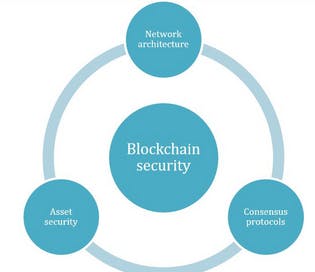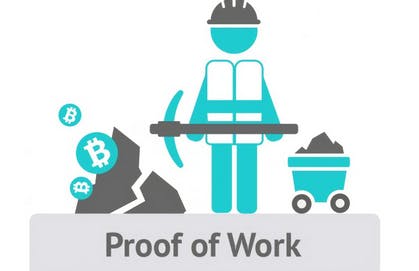INTRODUCTION
Blockchain technology has introduced a transformation in the way we approach data and trust in the digital world. This groundbreaking technology centers around a crucial component: consensus mechanisms. These mechanisms guarantee that distributed networks can agree on the state of a ledger without depending on a central authority.

In this short article, we will cover the fascinating world of blockchain consensus mechanisms, examining their types, properties, historical significance, challenges, and recent developments in the field.
The Importance of Consensus in Blockchain
Centralized systems are constructed based on trust in a central authority, such as banks, governments, or corporations. This trust relies on the authority's capacity to verify and validate transactions and uphold a centralized ledger.
Blockchain operates in a decentralized environment without a central authority making decisions. To establish trust in the blockchain, the network utilizes consensus mechanisms.

The mechanisms used allow participants in the network to reach an agreement about the state of the blockchain.
Features of a Consensus Mechanism
A good consensus mechanism should possess the following key properties:
Decentralization: A consensus mechanism must distribute authority among multiple nodes, thereby avoiding the concentration of power and the risk of a single point of control or failure.

Security: A consensus mechanism must offer a high level of security, to ensure the network is resilient to attacks from Harmful entities trying to manipulate the ledger.

Efficiency: Transactions should be smoothly and efficiently processed while reducing energy consumption.
Fairness: Every participant in the network should have an equal chance to participate in the consensus process. This fairness ensures the network is all-inclusive.

Types of Consensus Mechanisms
Proof of Work (PoW)
Proof of Work (PoW) serves as a consensus mechanism in blockchain networks, validating and confirming transactions. In this process, participants, known as miners, engage in competition to solve complex computational problems.

The first participant to successfully solve the problem earns the right to add a new block to the blockchain and receives a reward. Prominent cryptocurrencies such as Bitcoin and Ethereum initially embraced Proof of Work (PoW). Nevertheless, its reputation for high energy consumption raises concerns regarding environmental sustainability.
Proof of Stake (PoS)
PoS differs significantly from the concept of PoW. In this form of consensus mechanism, participants, known as validators, are chosen to generate new blocks based on the number of cryptocurrency tokens they possess and are willing to "stake" as collateral.

This approach provides increased energy efficiency in comparison to PoW while still upholding security and decentralization.
Delegated Proof of Stake (DPoS)
This type of consensus mechanism is a variation of POS. In this mechanism, a small group of delegates are elected by the network to validate transactions and create new blocks. This mechanism is known for its speed and scalability.

Proof of Authority (PoA)
This is commonly used in private blockchains and consortium blockchains. In this consensus mechanism, a predetermined group of authorized nodes or validators is tasked with verifying transactions and forming new blocks.

Byzantine Fault Tolerance (BFT)
BFT algorithms strive to attain consensus even when dealing with faulty nodes or malicious actors. BFT is frequently used in permission and consortium blockchains, where participants within the network are known entities.
Hybrid Consensus Mechanisms
Certain blockchains integrate various consensus mechanisms to strike a balance between security, speed, and decentralization.
Challenges and Future
Consensus mechanisms are not without challenges, they include;
Scalability: Achieving consensus on a global scale becomes expensive as the blockchain networks expand. To address this issue, innovations such as sharding and sidechains are being studied.
Energy Consumption: PoW, while secure, consumes lots of energy. To address environmental concerns, researchers are exploring alternative energy-efficient consensus mechanisms.
Centralization Risks: Some consensus mechanisms, such as DPoS, face criticism for introducing centralization risks due to a limited number of validators.
Latest Developments in Consensus Mechanisms
With the fast evolution of blockchain, there is ongoing research and development to enhance consensus mechanisms. Emerging mechanisms and variations strive to create a more environmentally friendly, efficient, and secure blockchain ecosystem. Some include:
Proof of Space and Time (PoST): This is a relatively new consensus mechanism that makes use of the available storage space and computational time instead of computational power. This method reduces energy consumption and introduces a new dimension of blockchain security.
Layer 2 Solutions: Layer 2 solutions, such as the Lightning Network for Bitcoin are designed to improve scalability and reduce the load on the primary blockchain network by conducting transactions off-chain.
Interoperability and Cross-Chain Solutions: Cross-chain platforms and interoperability protocols aim to link various blockchains, simplifying the exchange of data and assets across diverse blockchain networks.
This advancement holds the potential for increased flexibility in blockchain use cases and enhanced decentralization.
Conclusion
Consensus mechanisms are the foundation of blockchain technology, providing the essential trust and security needed in a trustless environment. As blockchain technology continues to evolve and integrate into various industries, it becomes an important decision for blockchain developers and stakeholders on the choice of a suitable consensus mechanism.
The field of consensus mechanisms is an exciting and dynamic area of research, which offers a wide array of possibilities to enhance the security, efficiency, and scalability of blockchain networks.
As we look toward the future, we can anticipate even more innovative consensus mechanisms that balance decentralization, security, and efficiency, further shaping the blockchain landscape and its applications.

